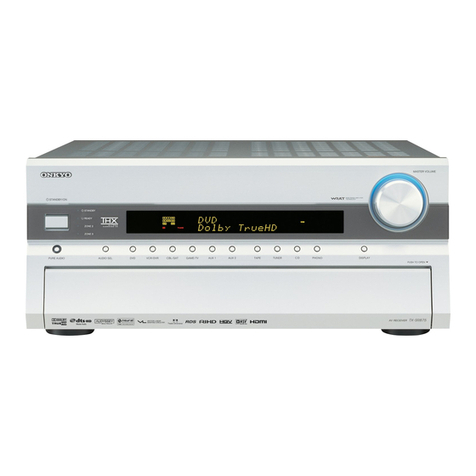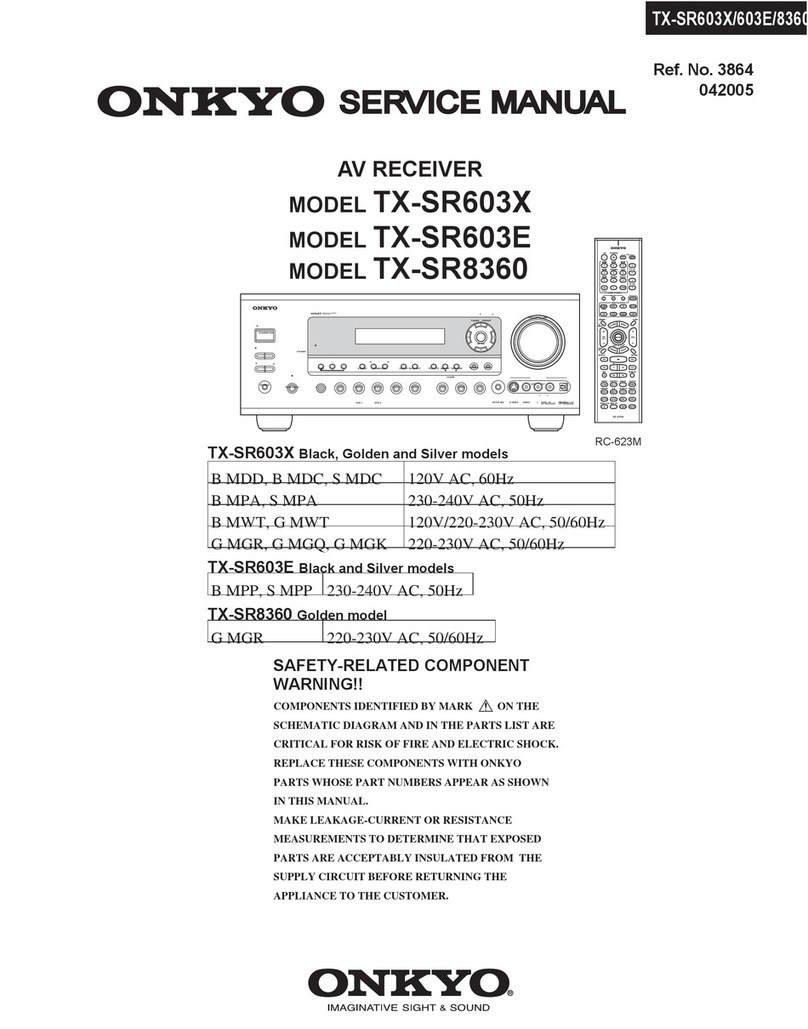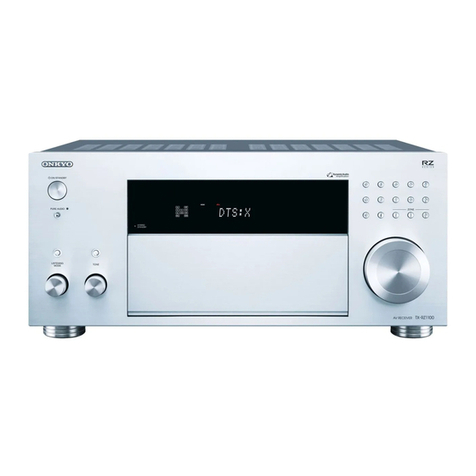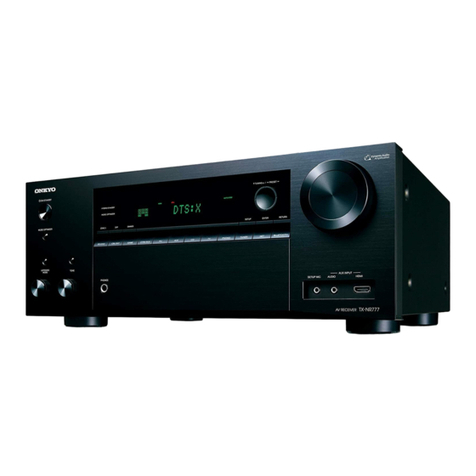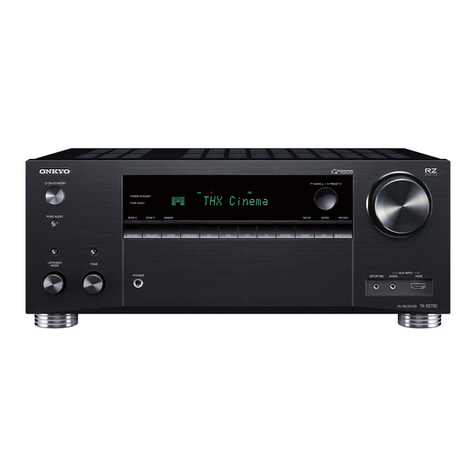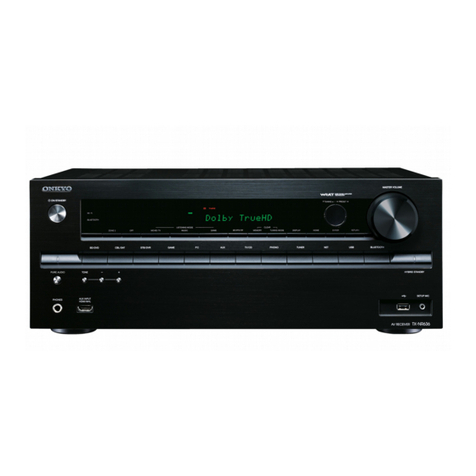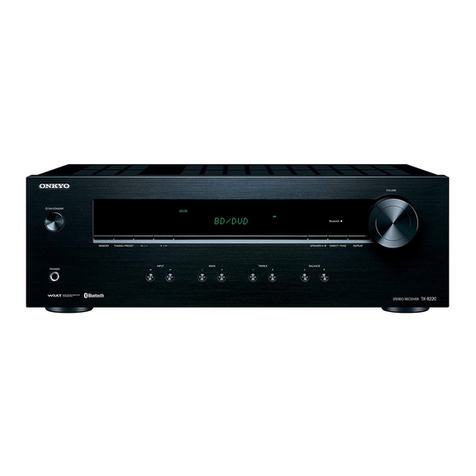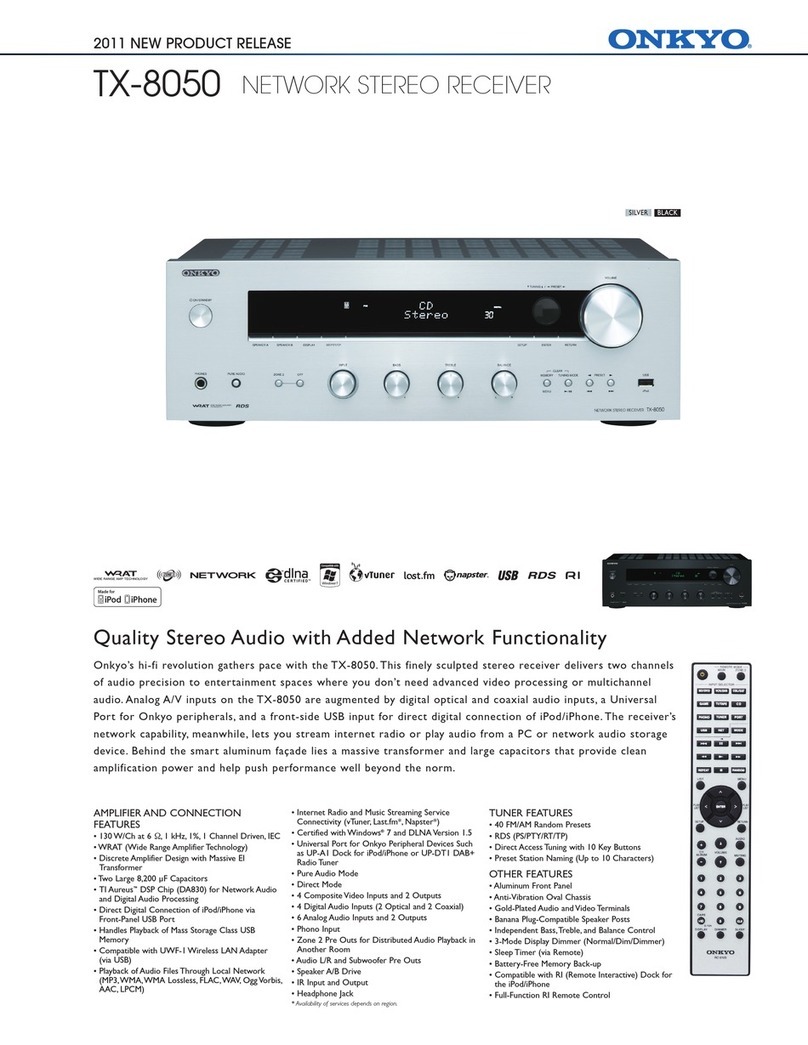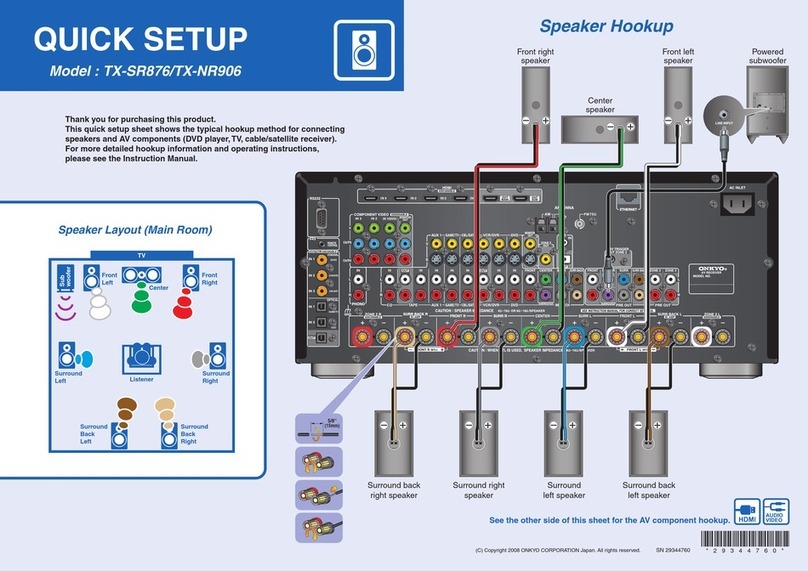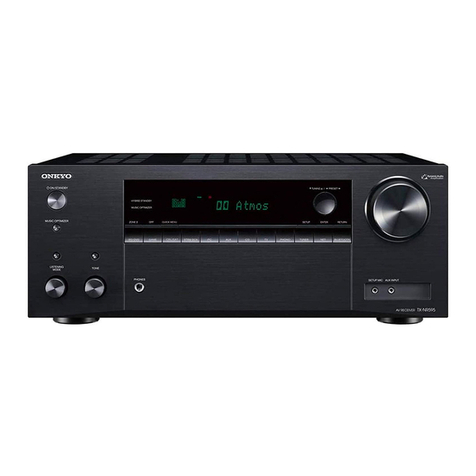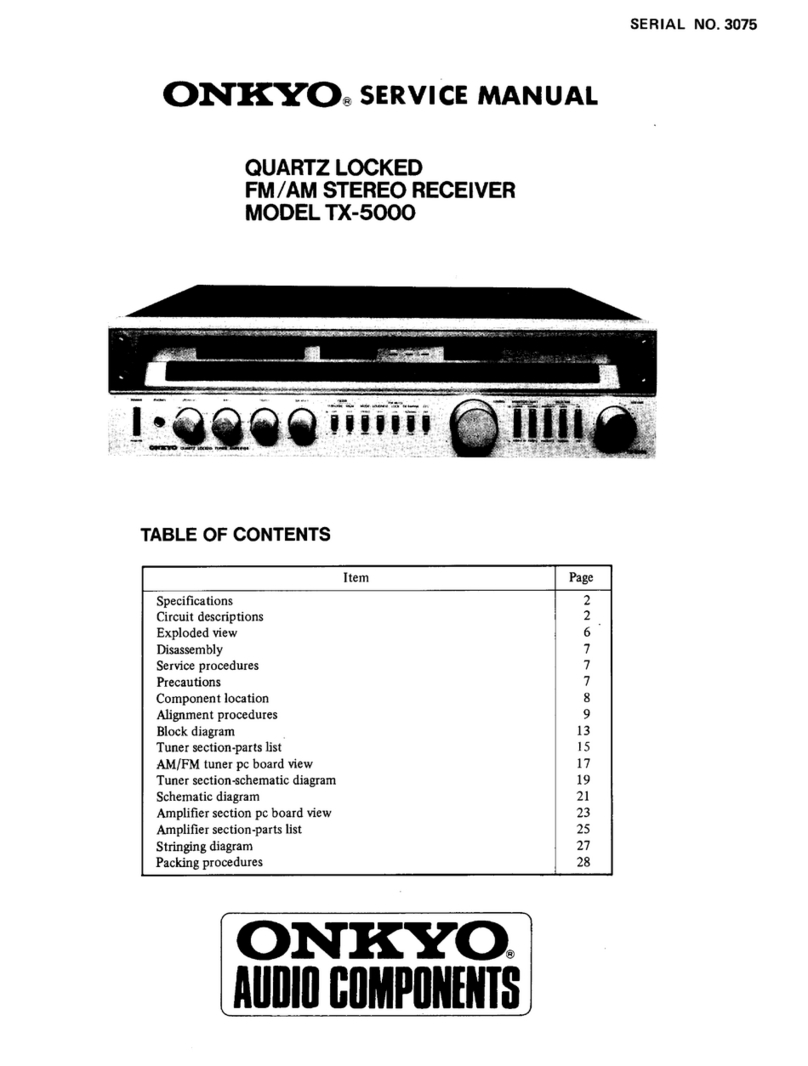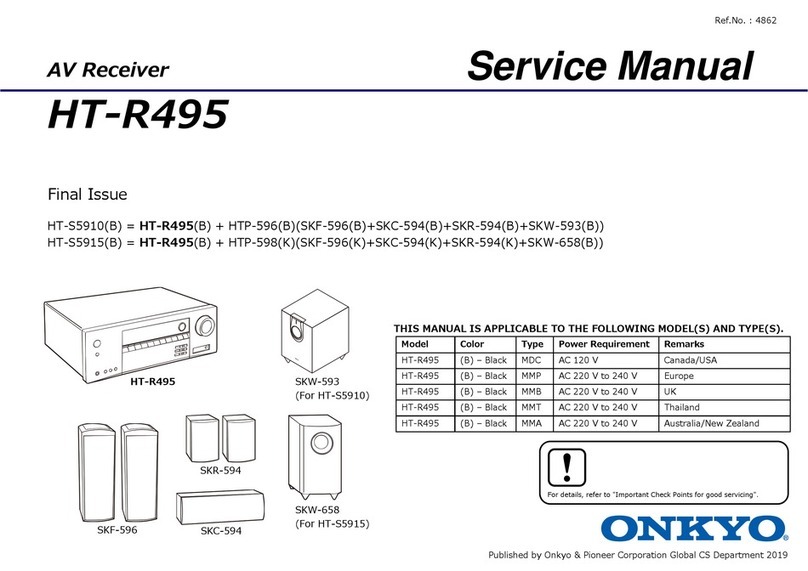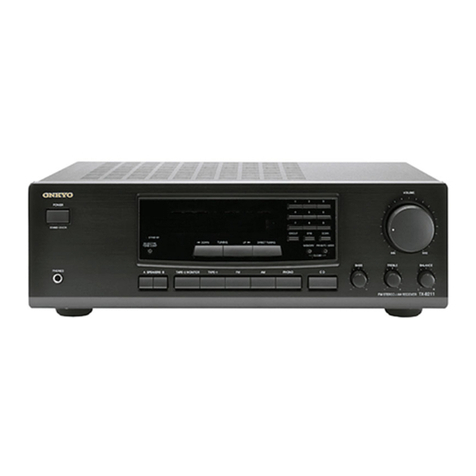3
1. Warranty Claim
You can find the serial number on the rear panel of the unit. In
case of warranty claim, please report this number.
2. Recording Copyright
Recording of copyrighted material for other than personal use is
illegal without permission of the copyright holder.
3. Deck Location
• Do not use or leave in direct sunlight or in other places
subject to high temperature and humidity. The unit should
also not be left in potentially hot places such as near heating
appliances. Excessive heat and moisture can lead to internal
damage and serious malfunctions (this also applies to cassette
tapes).
The recommended ambient temperature range is 5˚C to 35˚C.
• Avoid damp and dusty places and locations prone to vibra-
tions.
• Be extremely careful with the recording/playback heads.
Clean and demagnetize them regularly, but under no circum-
stances should magnets or other metals be used anywhere
near the heads.
• This unit is extremely sensitive to magnetic fields, so do not
use near large speakers or other devices which generate
magnetic fields.
• Hum may even be induced by magnetic flux leakage from the
power transformer in certain amplifiers. Therefore, this unit
should also be kept clear of the amplifier.
• Do not remove the cabinet case. If any of the internal parts
are handled, there is a considerable danger of electric shock.
4. Cassettes to Avoid:
• Cassettes with poorly formed cases that rattle during rewind
and fast forward.
• Low cost cassettes with no guide roller or pressure pad spring
should never be used for stereo.
• C-120 cassettes — because the tape and the coating are
extremely thin, distortion levels are high. Also, even a slight
stretching of the tape will make it susceptible to being caught
up in the pinch roller and capstan.
• Endless tapes, if used for a long period of time, can overheat.
5. Power
WARNING
BEFORE PLUGGING IN THE UNIT FOR THE FIRST
TIME, READ THE FOLLOWING SECTION CARE-
FULLY.
• The voltage of the available power supply differs according
to country or region. Be sure that the power supply voltage of
the area where this unit will be used meets the required
voltage (e.g., AC230V 50Hz or AC120V 60Hz) written on
the rear panel.
• Voltage Selector (Rear Panel)
Worldwide models are equipped with a voltage selector to
conform with local power supplies. Be sure to set this switch
to match the power supply in your area before plugging in the
unit. Models without a voltage selector can only be used in
areas where the power supply voltage is the same as that of
the unit.
Precautions
Important safeguards
PORTABLE CART WARNING
S3125A
1. Read Instructions — All the safety and operating instructions
should be read before the appliance is operated.
2. Retain Instructions — The safety and operating instructions should
be retained for future reference.
3. Heed Warnings — All warnings on the appliance and in the
operating instructions should be adhered to.
4. Follow Instructions — All operating and use instructions should be
followed.
5. Water and Moisture — The appliance should not be used near
water — for example, near a bathtub, washbowl, kitchen sink,
laundry tub, in a wet basement, or near a swimming pool, and the
like.
6. Carts and Stands — The appliance should be used only with a cart
or stand that is recommended by the manufacturer.
6A. An appliance and cart combination should be moved with care. Quick
stops, excessive force, and uneven surface may cause the appliance
and cart combination to overturn.
7. Wall or Ceiling Mounting — The appliance should be mounted to a
wall or ceiling only as recommended by the manufacturer.
8. Ventilation – The appliance should be situated so that its location or
position does not interfere with its proper ventilation. For example,
the appliance should not be situated on a bed, sofa, rug, or similar
surface that may block the ventilation openings; or if placed in a
built-in installation, such as a bookcase or cabinet that may impede
the flow of air through the ventilation openings, there should be free
space of at least 20 cm (8 in.) and open up behind the appliance.
9. Heat — The appliance should be situated away from heat sources
such as radiators, heat registers, stoves, or other appliances (including
amplifiers) that produce heat.
10. Power Sources — The appliance should be connected to a power
supply only of the type described in the operating instructions or as
marked on the appliance.
11. Polarization — If the appliance is provided with a polarized plug
having one blade wider than the other, please read the following
information: The polarization of the plug is a safety feature. The
polarized plug will only fit the outlet one way. If the plug does not fit
fully into the outlet, try reversing it. If there is still trouble, the user
should seek the services of a qualified electrician. Under no
circumstances should the user attempt to defeat the polarization of the
plug.
12. Power-Cord Protection — Power-supply cords should be routed so
that they are not likely to be walked on or pinched by items placed
upon or against them, paying particular attention to the cords at
plugs, convenience receptacles, and the point where they exit from
the appliance.
13. Cleaning — The appliance should be cleaned only as recommended
by the manufacturer.
14. Nonuse Periods — The power cord of the appliance should be
unplugged from the outlet when left unused for a long period of time.
15. Object and Liquid Entry — Care should be taken so that objects do
not fall and liquids are not spilled into the enclosure through
openings.
16. Damage Requiring Service — The appliance should be serviced by
qualified service personnel when:
A. The power-supply cord or the plug has been damaged; or
B. Objects have fallen, or liquid has been spilled into the appliance;
or
C. The appliance has been exposed to rain; or
D. The appliance does not appear to operate normally or exhibits a
marked change in performance; or
E. The appliance has been dropped, or the enclosure damaged.
17. Servicing — The user should not attempt to service the appliance
beyond that described in the operating instructions. All other
servicing should be referred to qualified service personnel.

